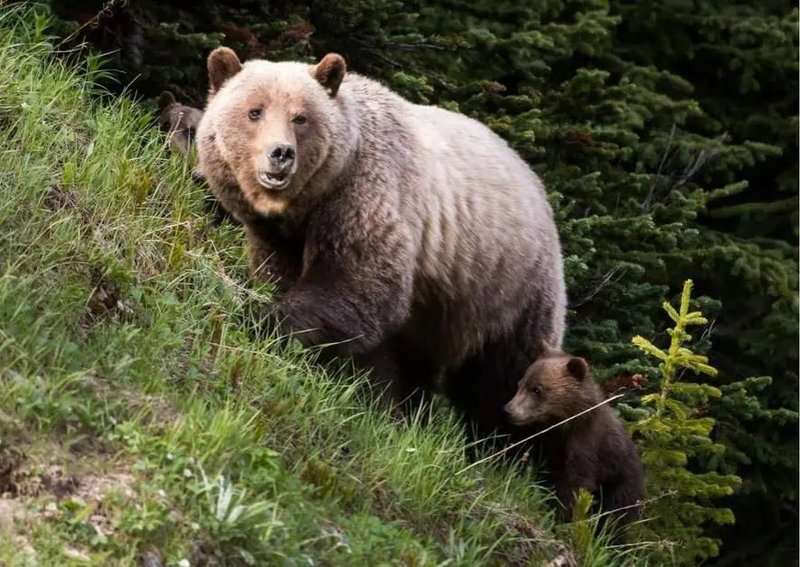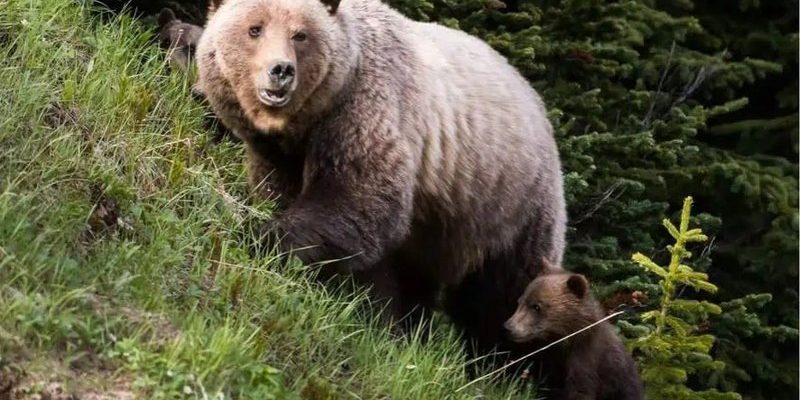
When we talk about animal intelligence, it often brings to mind pets like dogs or cats. These animals have developed strong bonds with humans and show impressive learning capabilities. But grizzly bears, while distant from human lives, showcase intelligence that’s just as fascinating. They solve problems, adapt to their environments, and even demonstrate social behaviors. Let’s dive into the cognitive world of grizzly bears and explore what makes them so remarkable.
Understanding Grizzly Bear Intelligence
So, what does it mean when we say a grizzly bear is intelligent? Just like humans and other mammals, bears display a range of cognitive abilities. Their intelligence isn’t just about raw power; it’s about how they interact with their environment and other animals. Grizzlies excel in navigating complex landscapes, finding food, and even communicating with one another—skills that require a sharp mind.
One key aspect of their intelligence is problem-solving. For instance, if a grizzly encounters a challenging food source, like a beehive, it will figure out how to get to the honey. They’ve been observed using tools, like rocks or sticks, to accomplish tasks. That’s quite impressive for a creature that many might underestimate!
Another interesting element is their memory. Grizzly bears possess excellent long-term memory, which helps them remember food sources and seasonal changes in their habitat. Think about it: if you were a bear, remembering where to find berries or fish would be crucial for survival. With such a memory, they can plan their activities according to seasonal availability, showcasing a level of foresight that’s especially vital in the wild.
Social Behavior and Communication
You might be surprised to learn that grizzly bears aren’t completely solitary creatures. While they often prefer to roam alone, they do engage in social behaviors, especially during mating season or when food is abundant. Their social interactions are a reflection of their intelligence. For instance, they can recognize the body language of other bears and react accordingly.
Grizzlies communicate in several ways. They use vocalizations like growls and huffs, but their body language tells just as much of a story. A bear standing tall might be establishing dominance, while a bear with lowered ears may be feeling threatened. This complex form of communication highlights their ability to read situations and respond appropriately, much like humans do in social settings.
Furthermore, bears also have unique ways of marking their territory, such as scratching trees or rubbing against them. This behavior not only communicates their presence to other bears but also shows their understanding of the importance of social structure in the wild.
Learning and Adaptation
Let’s talk about adaptability. Grizzly bears are found in various habitats, from dense forests to mountain ranges. Their ability to adjust to different environments reflects their intelligence and flexibility. For instance, if food becomes scarce in one area, a grizzly will learn to migrate to a new location that offers better resources.
This adaptability also means they’re quick learners. Young bears will closely observe their mothers as they hunt or forage, picking up essential skills through imitation. This learning process is crucial for survival, as the young ones learn what to eat, which areas to avoid, and how to deal with threats.
Additionally, grizzlies have been known to modify their behaviors based on human activity. In areas where they encounter more people, they may change their foraging habits. Instead of searching for food in open areas, they might become more nocturnal, hunting at night when there’s less human interference. This ability to adjust their habits shows not only intelligence but also a remarkable level of awareness.
Problem-Solving Skills in the Wild
Grizzly bears exhibit impressive problem-solving skills that set them apart in the animal kingdom. Whether it’s figuring out how to access difficult food sources or outsmarting potential predators, bears often display creativity in overcoming challenges. For example, researchers have observed bears using tools to help them gain access to food.
Consider a situation where a bear finds a cache of fish. If the fish are buried or hidden, a grizzly might dig or even move objects to reach its meal. This kind of innovative thinking is a sign of cognitive strength and a clear indication that they’re more than just muscle.
They also learn from their experiences. If a specific path leads to danger (like a human presence), bears will avoid that route in the future. This ability to learn from past encounters helps them navigate the wild safely and effectively, ensuring their survival.
The Role of Memory in Grizzly Behavior
Memory is a crucial aspect of a grizzly bear’s life. Strong recall allows them to thrive in the wild. They can remember locations of food, safe travel routes, and even the presence of other bears in certain areas. Imagine continuously looking for food in a vast wilderness; having a sharp memory becomes vital.
Research shows that grizzly bears can recall locations for years. For instance, if they remember a berry patch that flourished last year, they’re likely to return to that same spot when the season rolls around again. This long-term memory significantly impacts their foraging success and overall well-being.
Moreover, memory plays a vital role in their social interactions. Recognizing individual bears and their past behaviors helps reduce conflicts. If a bear remembers another bear as a friend or foe, it can adjust its behavior accordingly, fostering a more harmonious existence in its environment.
Conservation Implications of Grizzly Bear Intelligence
Understanding the intelligence of grizzly bears isn’t just an academic pursuit; it has real implications for conservation efforts. When we recognize their cognitive abilities and complex behaviors, we can better appreciate the need to protect their habitats. After all, these bears are integral to their ecosystems and contribute to biodiversity.
Conservation strategies that consider the intelligence of grizzly bears can result in more effective practices. For example, bear-proof trash cans are designed with their problem-solving abilities in mind. By understanding how they think, we can create barriers that truly keep them safe from human-related threats.
Additionally, educating the public about grizzly bear intelligence promotes coexistence. When people understand that bears are not just dangerous animals but intelligent creatures with rich lives, it encourages more respectful interactions and a greater emphasis on monitoring human activities in bear habitats.
The Bottom Line: Why Grizzly Bear Intelligence Matters
In conclusion, the intelligence of grizzly bears is nothing short of remarkable. Their problem-solving skills, social behaviors, and ability to adapt show that they possess cognitive abilities that rival those of many other species. Understanding how smart a grizzly bear is enhances our appreciation for these majestic creatures and underscores the importance of protecting their habitats.
Grizzly bears remind us that intelligence comes in many forms and can be found in the wildest places. The more we learn about them, the more we can advocate for their conservation and understand our role in the ecosystems they inhabit. Next time you think about these incredible animals, remember: they’re more than just the imposing figures we often see—they’re intelligent beings with memories, social skills, and problem-solving prowess!

